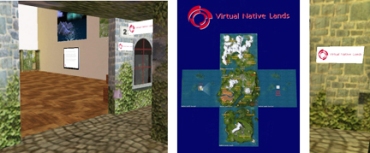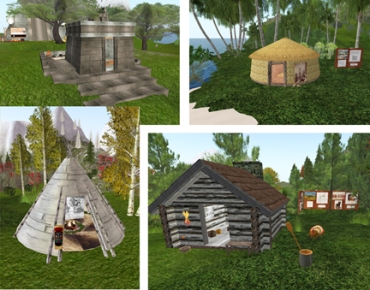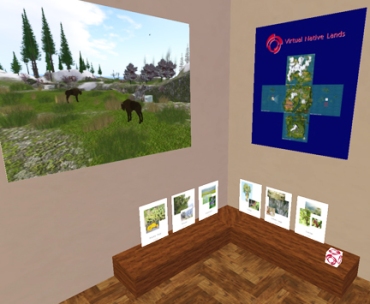
Obtaining creative design is crtitical to an organization’s growth and success. As the world becomes more visual, design grows as a strategic investment. Generally an initial project sets up a graphic foundation that gains momentum and keeps implementation costs to budget. However, initial costs are paid for before ideas are fully developed and benefits reaped. This can make many clients nervous, especially those without experience. They are concerned both about choosing the right designer and also about selecting the best concepts. Some think these risks can be avoided by asking for initial ideas as part of the proposal and awarding the project to the group with the best. Or, they may take up offers for free work from a designer who isn’t busy or one that is willing to donate. There are forms of obtaining professional-level design without paying for it:
SPECULATIVE DESIGN is when creative concepts are required with a proposal without compensation. The assumption is that when comparing concepts from several sources, you reward a winner. The other contributors are dismissed, possibly with a presentation fee. You hope to end up with the assurance via example that you made the right decision.
FREE SERVICE is when the designer doesn’t charge for creative services. Motivations to give away work, however, aren’t usually in your best interests. A designer willing to give away work:
• wishes to get a foot in the door—wanting to grow the business into paid projects
• wants to build experience and expand into a new area, thus learning on your project
• needs work, is hungry, and doesn’t know any better (see my blog about why this is such a bad idea for designers to undertake)
• is willling to donate services but doesn’t understand pro bono contributions—trading for a non-monetary exchange (see my blog that gives more description).
Asking for speculative or free design is counter to your goals and undermines creative efforts:
 1. Project parameters are not completely formulated when starting a project, especially when deadline is an issue. When you aren’t paying for the designer’s time, it is easy to be too casual in gaining initial consensus, identifying expectations, and defining the decision-making process. Rather, speculative work falls lower on the priority list for busy executives. To impress decision-makers into attentiveness, put money on the table. To begin a project without an agreed upon plan is to conduct a time-consuming experiment that falls apart through disorganization.
1. Project parameters are not completely formulated when starting a project, especially when deadline is an issue. When you aren’t paying for the designer’s time, it is easy to be too casual in gaining initial consensus, identifying expectations, and defining the decision-making process. Rather, speculative work falls lower on the priority list for busy executives. To impress decision-makers into attentiveness, put money on the table. To begin a project without an agreed upon plan is to conduct a time-consuming experiment that falls apart through disorganization.
 2. It is difficult to thoroughly brief more than one designer—solutions after one meeting will be superficial. Effective design results from a relationship that builds as solutions are explored. To place a speculative competition on completely equal footing means a serious investment in setting up the project with each—time that can be better spent in other ways after choosing the designer with the best rapport and portfolio.
2. It is difficult to thoroughly brief more than one designer—solutions after one meeting will be superficial. Effective design results from a relationship that builds as solutions are explored. To place a speculative competition on completely equal footing means a serious investment in setting up the project with each—time that can be better spent in other ways after choosing the designer with the best rapport and portfolio.
 3. It is a major challenge to compare concepts. Different designers don’t develop approaches from equal resources. Design approaches are based on very different capabilities, talent, and knowledge. Concepts may be presented like apples and oranges and ultimately not scaled enough to the unique assignment. It usually ends up that any presented concepts need a lot more work because new parameters surface.
3. It is a major challenge to compare concepts. Different designers don’t develop approaches from equal resources. Design approaches are based on very different capabilities, talent, and knowledge. Concepts may be presented like apples and oranges and ultimately not scaled enough to the unique assignment. It usually ends up that any presented concepts need a lot more work because new parameters surface.
 4. Results are insufficient—there are very few documented cases where spec design turns out favorably without the in-depth commitment of a collaboration. The designer who wins generally has to begin again with additional specifications. In the end, it is a case of being penny wise but ends up being pound foolish.
4. Results are insufficient—there are very few documented cases where spec design turns out favorably without the in-depth commitment of a collaboration. The designer who wins generally has to begin again with additional specifications. In the end, it is a case of being penny wise but ends up being pound foolish.
 5. Best efforts can’t be applied. The designer is unable to spend as much time as he or she could if getting compensated. Paying work must take priority. Few clients wish to have their needs be less important! And the most talented designers are too busy to undertake unpaid work. So the best talent for the project is not used. Also, while working on unpaid projects, a designer is forced, by limitations of time, to go with first ideas instead of exploring possibilities that results in ideas worth the most.
5. Best efforts can’t be applied. The designer is unable to spend as much time as he or she could if getting compensated. Paying work must take priority. Few clients wish to have their needs be less important! And the most talented designers are too busy to undertake unpaid work. So the best talent for the project is not used. Also, while working on unpaid projects, a designer is forced, by limitations of time, to go with first ideas instead of exploring possibilities that results in ideas worth the most.
 6. Designers don’t gain an in-depth understanding of the project. They can’t afford to build a background or gain the administrative support for worthwhile collaboration. There is no such thing as a good design without a good client—which means working together towards the same goals.
6. Designers don’t gain an in-depth understanding of the project. They can’t afford to build a background or gain the administrative support for worthwhile collaboration. There is no such thing as a good design without a good client—which means working together towards the same goals.
 7. The competition arrangement is inappropriate for developing creative solutions. If there is a contest between several creative sources, then one or more groups will not get paid for their work. The purpose of portfolio reviews, proposals, and interviews is to differentiate one designer from another. Choosing rapport, trust in insight, and strong project approach is a better way to apply efforts than to gloss superficially over the important nature of informational communication.
7. The competition arrangement is inappropriate for developing creative solutions. If there is a contest between several creative sources, then one or more groups will not get paid for their work. The purpose of portfolio reviews, proposals, and interviews is to differentiate one designer from another. Choosing rapport, trust in insight, and strong project approach is a better way to apply efforts than to gloss superficially over the important nature of informational communication.
Those who embark optimistically on finding such donations must beware that the results are not beneficial to their organizations. Design may seem easy to give away because ideas are tough to put price tags on. However, design—especially in its initial phases—is the most valuable of visual equity. Because this is the least tangible of the publishing phases, because it requires the greatest amount of market understanding, because it uses the greatest talents, and because it is the basis for all other initiatives, the design is the spark that sets the other processes in motion. It is a mistake to undervalue this service. Fortunes have been made through strong and communicative design approaches.
Perhaps Milton Glaser is one of the most famous graphic designers in the U.S. He said:
“In our society, we express our respect for work by paying for it. When we refuse to do so, we are expressing contempt for the work and the worker. In difficult times, the fundamental rules of human conduct are under attack in and out of business. The only appropriate response is not to allow our own sense of values and self-respect to erode in the face of it.”







 1. Project parameters are not completely formulated when starting a project, especially when deadline is an issue. When you aren’t paying for the designer’s time, it is easy to be too casual in gaining initial consensus, identifying expectations, and defining the decision-making process. Rather, speculative work falls lower on the priority list for busy executives. To impress decision-makers into attentiveness, put money on the table. To begin a project without an agreed upon plan is to conduct a time-consuming experiment that falls apart through disorganization.
1. Project parameters are not completely formulated when starting a project, especially when deadline is an issue. When you aren’t paying for the designer’s time, it is easy to be too casual in gaining initial consensus, identifying expectations, and defining the decision-making process. Rather, speculative work falls lower on the priority list for busy executives. To impress decision-makers into attentiveness, put money on the table. To begin a project without an agreed upon plan is to conduct a time-consuming experiment that falls apart through disorganization.